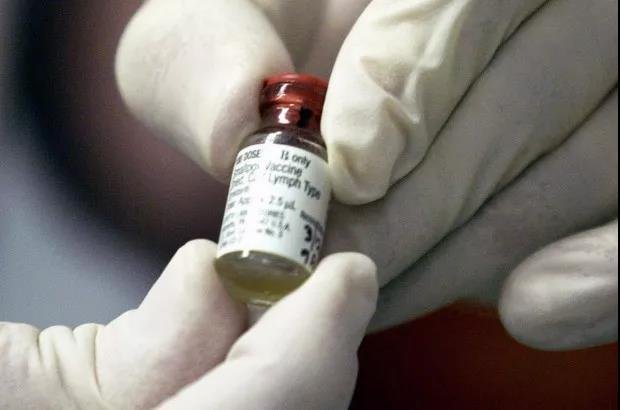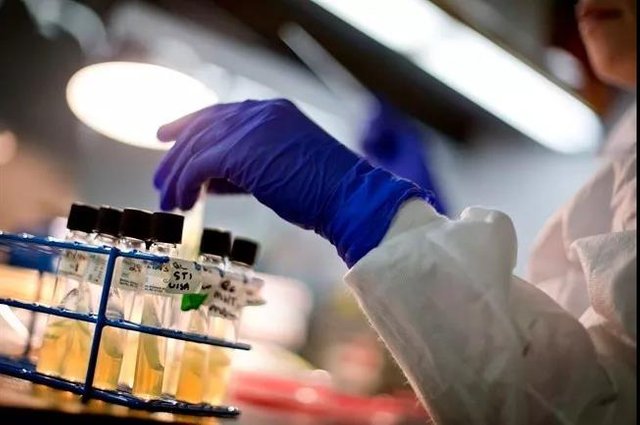The last person infected with smallpox died of a "captive" virus sample in the laboratory

As early as 1145 BC, smallpox disease killed Egyptian pharaohs. The ancient disease caused by the smallpox virus has existed on the earth for at least 3000 years, making it one of the most feared diseases in the world.
Until 1977, a smallpox patient in Somalia became the last known natural case, and humans finally controlled the spread of the disease with a smallpox vaccine. Two years later, the World Health Organization (WHO) officially announced that smallpox was eliminated.
Why did smallpox be declared eradicated two years after the last natural case? It turned out that in the past two years, there was also an outbreak of smallpox virus. The only case was caused entirely by humans. The smallpox virus, which was blocked in the laboratory for research purposes, was leaked from the laboratory.
The variola virus leak brought death, sparked a nationwide mass prevention, and sparked a decades-long international debate on whether variola virus should retain research samples or should it be completely destroyed?

People have been unarmed by smallpox disease, the virus has spread widely, and killed a third of infected people, killing about 500 million people for thousands of years. Until human beings developed vaccinia and human pox vaccines, and after widespread vaccination in the 1960s and 1970s, it was difficult to successfully eradicate smallpox.
Smallpox virus in nature does not exist in the world today, but variola virus samples for research use are still kept in only two laboratories. If the smallpox virus in the laboratory is released to the outside world, how big a disaster will people face?
One year before the smallpox disappeared, there was such a laboratory leak incident. This accident directly caused the eradication of the smallpox to be delayed for more than a year.

Vaccination of children against smallpox
In 1978, one year after the emergence of the last natural case in Somalia, humans have eliminated variola virus in nature. The only smallpox virus is stored in the laboratory for research. At this time, variola virus became a rare research resource, and many laboratories rushed to apply for samples.
Henry Bedson, of the University of Birmingham School of Medicine, devoted his entire life to studying smallpox virus, and he "snapped" a sample. In the fall of 1977, he applied to the WHO for the Birmingham Medical Laboratory as a smallpox research laboratory. However, the WHO also wanted to store as few variola viruses as possible worldwide, so it rejected Bedson's application.
With the persistent application of Bedson, in August 1978, he finally obtained the approval of the WHO, allowing him to retain and study the smallpox virus at the University of Birmingham until the end of the year. Bedson's laboratory has thus become one of the very few laboratories with variola virus samples.
However, a few days after the smallpox virus was sent to Birmingham Medical College, a virus leak that caused Bedson's collapse occurred. A suspected case of smallpox appeared in Birmingham, and the virus most likely came from his laboratory.

Smallpox virus under the microscope
Janet Parker, 40, an anatomical photographer at the University of Birmingham, works in a darkroom just above the smallpox virus laboratory. On August 11, Parker began to feel unwell, and some red spots appeared on her back, limbs and face. The doctor diagnosed her with chickenpox.
However, as time passed, Parker's condition did not improve, but gradually worsened. She was weakly unable to maintain standing, her rash was very severe, her eyesight gradually deteriorated, and she became blind. Parker was taken to an isolated hospital before people realized that another smallpox case had appeared. Prior to this, smallpox had not appeared in Britain for five years.
The emergence of this case caused panic in Birmingham and was closely watched by the government and WHO. This has become a major problem of the world, and a little carelessness may make it difficult to control smallpox again. So the medical team began to investigate and prevent large-scale populations.

Janet Parker

At this point, Parker had symptoms of kidney failure and pneumonia. Medical staff immediately vaccinated and isolated people she had contacted. From her closest husbands, parents, and other loved ones to men who went to her house to repair washing machines, Tongtong has become a dangerous group.
A woman who sold Parker's skating boots also became ill as a result of receiving the three £ 1 bills Parker paid her. Fortunately, she and her family were not life-threatening after treatment and isolation.
On the day Parker was admitted, Wrigley, an engineer at Birmingham Medical College, was on duty. After Parker was diagnosed with smallpox, he had gone to Dorset with his family for vacation, and medical staff could not confirm his whereabouts. Seeing that the scope of the source of infection may be widened, the health official immediately issued a national warning. Fortunately, it turned out that Wriggle had contracted cowpox and not smallpox.
Within two weeks of the discovery of Parker's infection, more than 500 people had been vaccinated. People waited in lines outside medical centers across the city for hours, and the scene was unprecedented. The city's 260 people were isolated at home, and an isolated newlywed had to postpone the wedding.

People line up for smallpox vaccine
Even though prevention and quarantine have been carried out in time, the outbreak of the disease still caused deaths. Shortly after, Parker's 77-year-old father died of a cardiac arrest, and he was thought to be caused by a smallpox infection. Because of the risk of smallpox infection, Parker's father never performed an autopsy.
One day after his death, a person who was not infected with the virus committed suicide. On September 6, Bedson was found committing suicide in his own garden, and died a few days after being taken to hospital for rescue. The virologist who devoted his entire life to studying smallpox virus, let the smallpox virus leak from his laboratory, causing panic across the country and retrogression in human medicine. He was ashamed of the world. Five days later, Parker had failed to escape the smallpox virus and died.

Henry Bedson
After Parker's death, people's vigilance against smallpox remains unresolved. A year later, the University of Birmingham fumigated the medical school, and Parker's ward remained blocked until five years later.
In addition to controlling the epidemic in a timely manner, it is also important to investigate how Parker contracted laboratory variola virus. One of the most likely explanations for the facts is that some people thought that the deadly smallpox virus was transmitted from the laboratory through the air duct to the room where Parker works upstairs.
In October 1979, the University of Birmingham accused of violating health and safety laws, and the argument was an airborne view. However, several internationally recognized experts provide evidence that variola virus cannot be transmitted through the air, causing Parker to become infected. They thought that the pipes in the laboratory were not tight, which was caused by fumigation afterwards.
After a ten-day trial, the court pleaded not guilty to the University of Birmingham. So how Parker contracted smallpox is still Birmingham's biggest medical riddle.

University of Birmingham School of Medicine
People still don't know how the smallpox virus samples in Bedson's lab leaked out. But people still fear that it is now in the laboratory, and a small accident may leak the smallpox outbreak again. Will the "devil" once imprisoned by humans be released by humans again?
In December 1979, the WHO officially announced that smallpox had been eliminated and an agreement was reached. The agreement states that all remaining variola virus will be destroyed and only a small number of samples will be transferred to two secure laboratories. There are only two laboratories authorized to have live variola virus reserves in the world: the US Centers for Disease Control and Prevention, and the Russian National Center for Virology and Biotechnology.
But this has not completely eliminated people's fears, what if the smallpox virus in these two laboratories also leaked? In 1986, the WHO recommended the destruction of all smallpox viruses in the laboratory. The final destruction period was limited to December 30, 1993.
However, the date of destruction was first postponed to 30 June 1999 and later to 30 June 2002. Finally, in 2002, the WHO allowed a small number of virus banks to be temporarily retained for specific research purposes. The variola virus in the laboratory was not destroyed, but was retained. So the international debate on "whether variola virus should be destroyed" continues.

Sealed smallpox virus

Scientific researchers believe that because of the risk of another outbreak of smallpox disease, it is necessary to retain smallpox samples. Scientists need to continue testing accordingly, and release drugs and vaccines against smallpox if they occur.
Conservative WHO officials believe that experiments have already collected all the information on pathogens, and continued research can hardly obtain new information, but can only increase the risk of accidental virus release.
Others believe that destruction of variola virus samples in the two laboratories does not prevent research. Because the genome of variola virus is known, scientists can use the latest DNA technology to replicate the virus.
It turned out that the group that ultimately thought it necessary to retain variola virus samples won. But many people still fear the virus that was blocked in the laboratory. After all, in the relevant news reports, they are always sending dangerous signals to people.
In July 2014, a smallpox virus sample was found in the storeroom of a government agency laboratory near Washington, U.S.A. The fact that there are smallpox viruses in addition to the two highly protected laboratories in the United States and Russia is frightening. Fortunately, the glass bottle containing the smallpox virus has not been opened, and there is no risk that the experimenter or the public will be infected.

Just this year, there was also a panic that could endanger the world. On September 16, the Russian National Center for Virology and Biotechnology (Vector), which is one of only two laboratories in the world to store smallpox virus, had a gas explosion that triggered a fire.
In addition to the smallpox virus, the exploded laboratory building also contained viruses such as Ebola and AIDS. The explosion severely burned a worker and damaged a large number of glass facilities. If the explosion caused a virus leak and the smallpox virus was leaked, it could be a disaster all over the world. Fortunately, according to authorities, the blasted room happened to be free of any virus samples and there was no risk of a virus leak.
This is not the first time that Vector has leaked a virus. As early as 2004, a laboratory researcher accidentally injured himself with a needle containing Ebola virus. He then left the high-security laboratory and died in the complex. A Parker-like virus leak almost re-enacted.

Russian National Center for Virology and Biotechnology Research
People's fear of smallpox has not disappeared because it has been eliminated worldwide. The virus samples in the laboratory have become a strained string in people's hearts.
And in national laboratories where the safety factor is as high as possible, are people's fears superfluous or reasonable?
Very good post friends
Thx
Ok
Congratulations @reggaeddee! You have completed the following achievement on the Steem blockchain and have been rewarded with new badge(s) :
You can view your badges on your Steem Board and compare to others on the Steem Ranking
If you no longer want to receive notifications, reply to this comment with the word
STOPTo support your work, I also upvoted your post!
Vote for @Steemitboard as a witness to get one more award and increased upvotes!